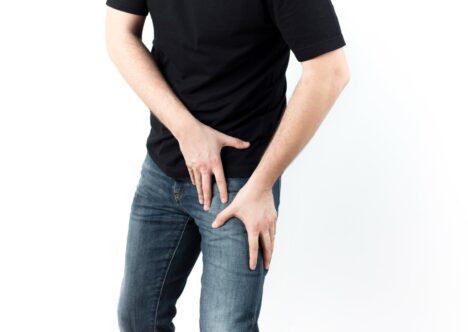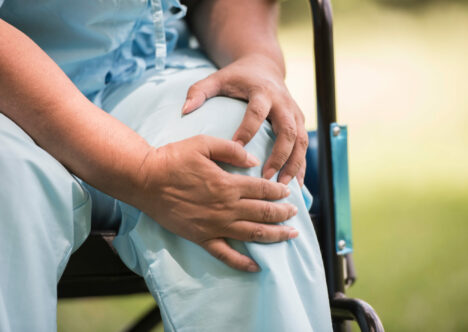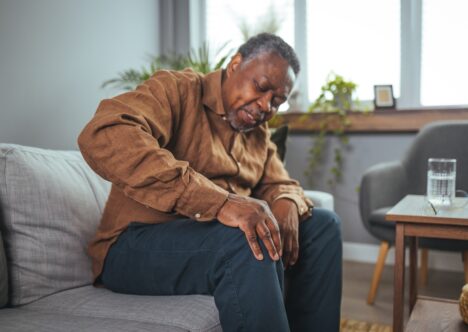Use our convenient online scheduler to book an appointment now.
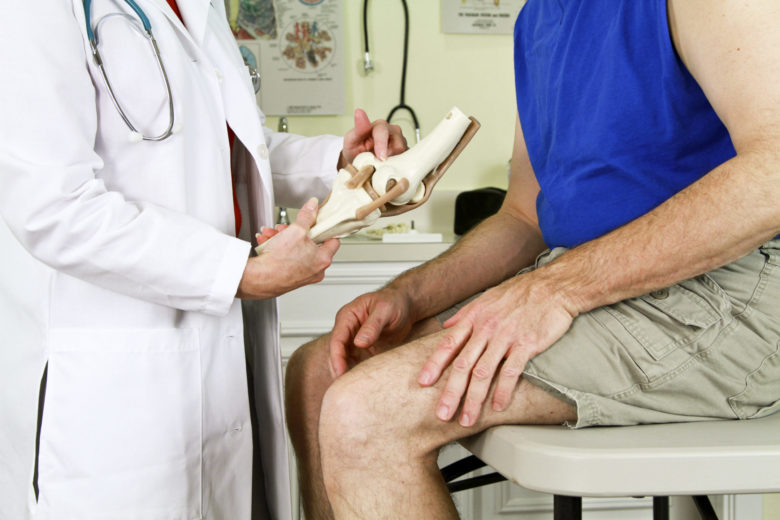
One of the most common reasons people undergo a total or partial knee replacement procedure is knee osteoarthritis (also known as “degenerative” or “wear-and-tear” arthritis). In knee osteoarthritis, the cartilage protecting the bones of the knee slowly wears away. This can occur throughout the knee joint, or in just a single area of the knee. Over time, the knee may become painful and it may be more difficult to carry out daily activities.
The knee has three main compartments:
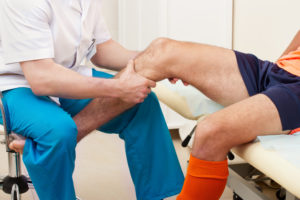
- Medial Compartment (the inside part of the knee)
- Lateral Compartment (the outside part)
- Patellofemoral Compartment (the front of the knee between the kneecap and thighbone)
If osteoarthritis is present in one or two compartments only, a partial knee replacement may be an effective option for long-term relief.
What is a Partial Knee Replacement?
A partial knee replacement (also known as unicompartmental knee replacement) is a procedure in which only the affected portion of the knee is resurfaced. The partial knee replacement specialists at Town Center Orthopaedics offer partial knee arthroplasty using advanced robotic technology. During the procedure, the damaged parts of the knee are removed. They are then replaced with metal implants and a plastic bearing surface, allowing for smooth, pain-free movement.
The benefits of a partial knee replacement over total knee replacement include:

- Quicker recovery
- Less pain after surgery
- Less blood loss
- Lower risk of infection and blood clots
This common procedure can help reduce pain and restore range-of-motion. The AAOS estimates that 90% of modern knee replacements are still working more than 15 years after surgery. But how do you know when it’s time for a surgical option?
Should I Have A Partial Knee Replacement?
If your knee pain has not responded to more conservative, non-surgical methods of pain management such as physical therapy, steroid injections, or anti-inflammatories, it may be time to consider surgical intervention.
As a leading provider of high-quality, state-of-the-art orthopedic care for patients throughout the Commonwealth of Virginia, the orthopedic surgeons at Town Center Orthopaedics evaluate each unique case with the duty, care, and attention you deserve. Our patient-centered approach means that you will be involved in every step of the process to ultimately achieve the best outcome for you.
How is a Partial Knee Replacement Performed?

Partial knee replacement surgery typically takes roughly an hour and a half, during which the damaged bone surface is removed and replaced with an implant that restores the knee’s anatomy. The anterior and posterior cruciate ligaments, and the medial and lateral collateral ligaments are maintained, allowing for a more normal feeling knee. During the procedure, the surgeon ensures that the knee is functioning correctly.
Partial Knee Replacement Recovery Time
Due to advances in minimally-invasive technologies, patients can typically be discharged home on the day of surgery, and do not require an overnight hospital stay. While the duration of your partial knee replacement recovery can vary, patients usually ambulate with a walker for 1-2 weeks after surgery, and then transition to a cane for another 1-2 weeks.
Physical therapy after surgery focuses on your range of motion and strengthening. As an integrative team, the surgeons and physical therapists at Town Center Orthopaedics work together to help patients achieve successful results.
To determine if you are a candidate for partial knee replacement or to schedule your appointment, call Town Center Orthopaedics any time at (571) 250-5660, or request an appointment today.
Join our Mailing List
TCO provides patients with orthopedic problems the trusted resources and patient-centered advice they need to “Feel Better. Move Better. Be Better.”
© 2024 Town Center Orthopaedics | All Rights Reserved
